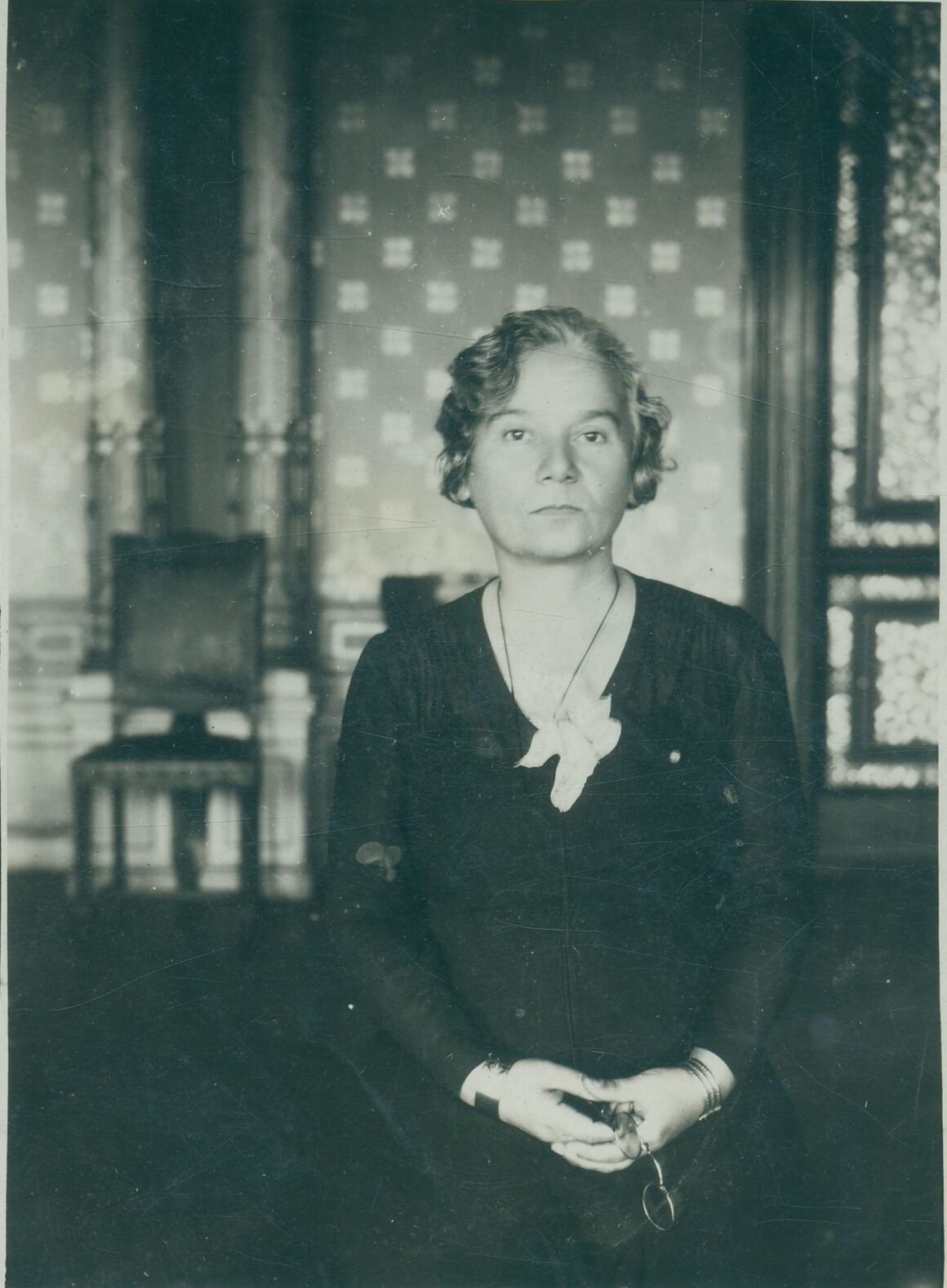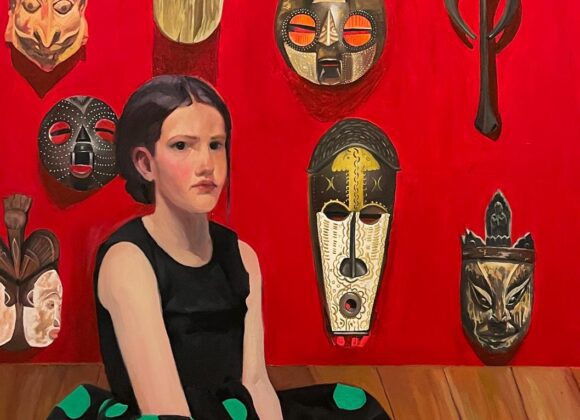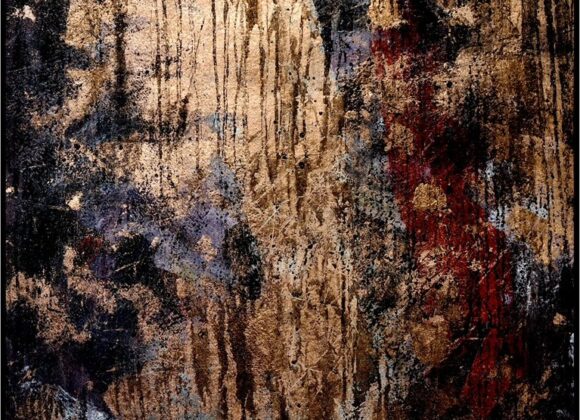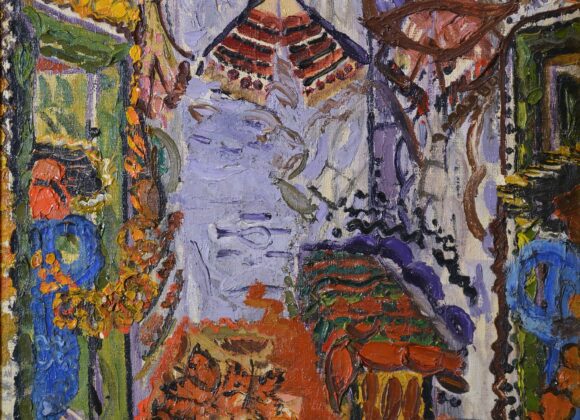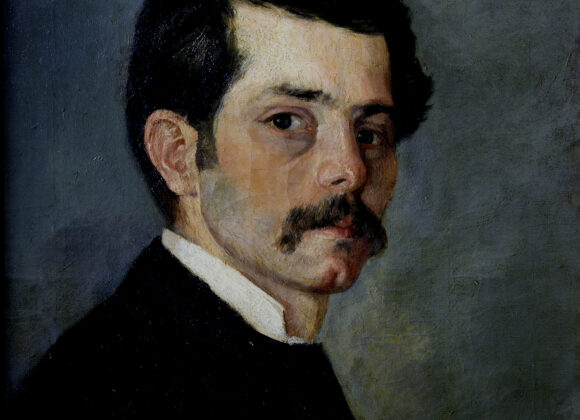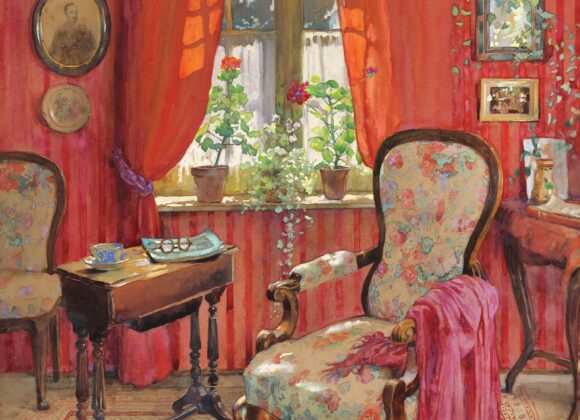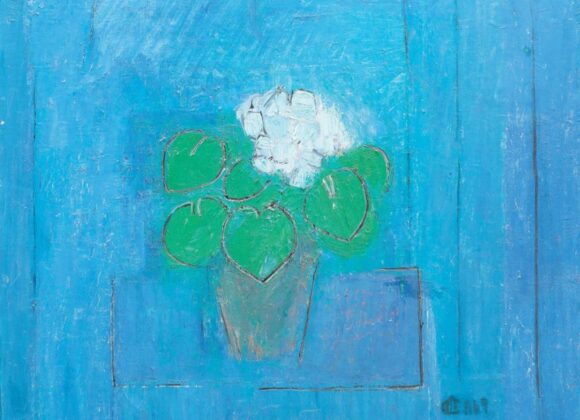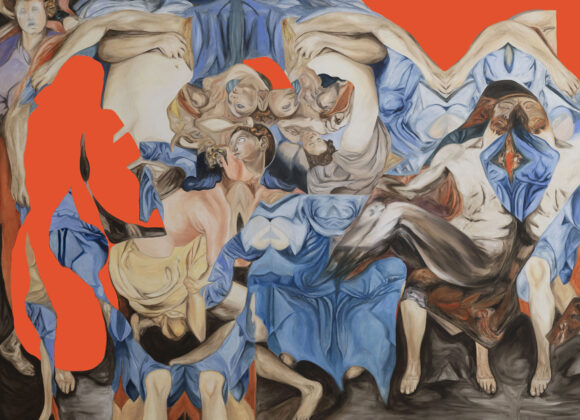Cecilia Cuțescu-Storck
The First Female Art Professor in Europe
Sept. 6 – Dec. 15
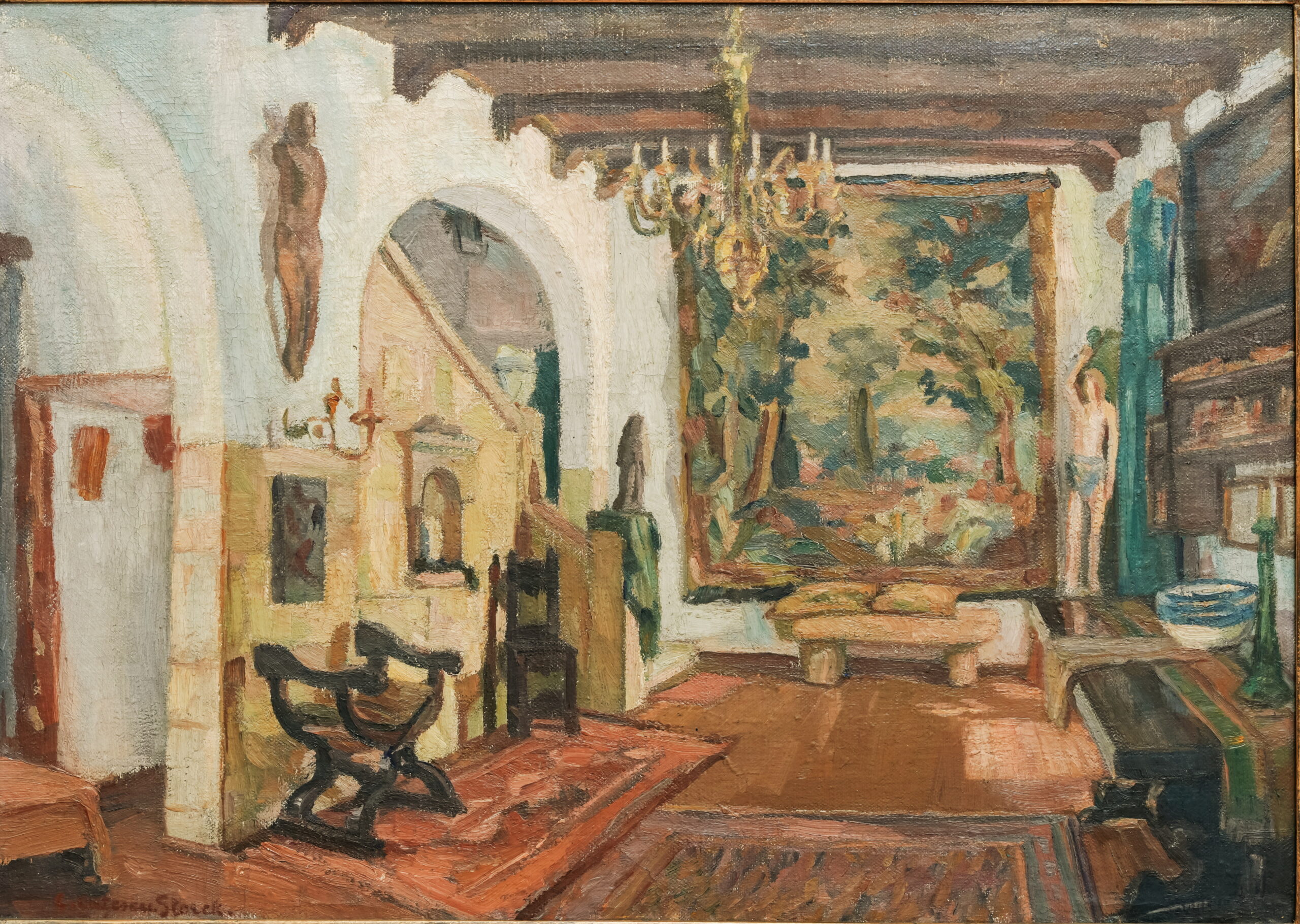
Strong, ambitious, a committed feminist, mother, sister and wife, hard-working and eager to show everyone that women belong next to men, not in their shadow – this is how one could describe, in just a few words, Cecilia Cuțescu-Storck (1879-1969), a Romanian woman artist with a strong influence in the cultural life of the interwar period, Europe’s first female art teacher.
A sophisticated artist, with prestigious studies in Paris
The female artist was born in Câineni, near Râmnicu Vâlcea. She was adopted by her maternal grandparents, Elena and Constantin, from whom she took the surname Cuțescu.
After graduating from the Central School for Girls in Bucharest, on the recommendation of the Polish painter Tadeusz Ajdukiewicz – a renowned personality at the time, who confirmed Cecilia’s talent – in 1897 she went to Munich, where she studied at the Damenakademie with Professors Fehr and Schmidt, and in 1899 she moved to Paris, where she studied at the Julian Academy with Jean-Paul Laurens and Benjamin Constant, and at École de Beaux-Arts with Professor Humbert. She married the French violinist Romulus Kunzer (father of Cecilia’s first child – Romeo) and remained in France until 1906. During her stay in the French capital, she kept in constant contact with the Romanian artists studying in Munich or in Paris, but also took part in exhibitions organised in Romania. Also here, in the bohemian French city, she exhibited at the Salon d’Automne, at Champ de Mars, and had her first solo exhibition at the Hesséle Gallery, on Rue Lafitte, in 1905.
In 1906, the female artist returned to the country permanently, settling in Bucharest, and three years later she married the sculptor Frederic (Fritz) Storck. Together they had two daughters: Gabriela Storck, who became an architect, and Cecilia (Lita) Botez, a ceramist.
Intense artistic activity, rewarded with numerous prizes and distinctions
Starting with 1916, she frequently took part in exhibitions organised in the country and abroad, but she also had solo exhibitions: in 1906 and 1924 at the Romanian Athenaeum, in 1928 at “Ileana” Hall, in 1932 in her own studio and the large retrospective at Dalles Hall, in 1958. For her intense artistic activity she was rewarded with numerous prizes and distinctions: Second Medal at the Exhibition of Living Artists, in 1912; “Bene Merenti”, 2nd class, in 1914; Gold Medal at the International Exhibition in Barcelona, in 1929; Knight of the Legion of Honour – France, in 1929; Knight of the Order of Civil Merit – Spain, in 1930; Order of “Cultural Merit” in the rank of Knight, in 1940; Order of Labour, 2nd Class, in 1956, Emeritus Master of Art, in 1957 – some of them present in this exhibition.
Together with Olga Greceanu and Nina Arbore, she founded the Association of Women Painters and Sculptors. Subsequently, the painter’s election as President of the Fine Arts Syndicate in 1937 was beneficial to the syndicate. Under the patronage of Marie of Romania, who was a great art enthusiast and supporter, Cecilia was given a headquarters for the syndicate on I.C. Brătianu Boulevard, as well as a space for congresses and exhibitions. She also obtained rights and privileges for artists: pensions, royalties, travel cards, tax reductions.
All these achievements were crowned by the most important one: the fact that she was the first woman in Europe to succeed in having a teaching career in a higher art academy, in the Department of Decorative Arts, starting from 1916. Her acceptance as a professor at the Fine Arts Academy in Bucharest was celebrated with great enthusiasm in Paris, in the studio of the Polish painter Olga Boznańska, who also painted a portrait of the artist, which is on display in the present exhibition. Guests included Max Jacob, Chana Orloff, Fernand Léger, Constantin Brâncuși, Oskar Kokoschka. Cecilia Cuțescu-Storck held this position until 1941.
Her interest in mural painting has left its mark on her own house, now a magnificent museum
After marrying Frederic Storck, the couple built, in collaboration with the architect Alexandru Clavel, the property on 16 Vasile Alecsandri Street, which became the family home. The construction was completed in 1911 and between 1913 and 1917 the female artist decorated the interior with numerous symbolist-inspired murals, depicting figures of women and lush vegetation, thus showing her preoccupation with mural painting.
The harmonious interplay between the figures decorating the ceiling and the walls of the central hallway is reminiscent of Oriental carpets, and the large composition in the background of the studio, entitled Earthly Love and Spiritual Love, was inspired to her by Ellen Kay’s book De l’Amour et du Mariage. As a tribute to this book, Cecilia wrote the following quote under the composition Spiritual Love: “To love is to lose ourselves in a soul in which our soul finds support without losing its freedom; it is to find a reasoning that foresees our spoken and unspoken feelings; it is to meet a gaze that sees reality filled with promises; it is to feel a hand extended towards our hands in moments of agony…”
In 1948, the Storcks’ artworks were declared to be of public utility, and in 1951 their studio was opened as an art museum, with the family retaining the living space. Today, the building can be visited and it houses the “Frederic Storck and Cecilia Cuțescu-Storck” Art Museum, part of the Bucharest Municipality Museum.
Her murals, in the Aula Magna of the Academy of Economic Studies in Bucharest and at Marmorosch Blank
The decoration of the house brought her several important commissions: the triptych Agriculture, Industry and Trade for the hall of honour of the Marmorosch Blank Bank in 1916; The History of Romanian Trade for the Aula Magna of the Bucharest Academy of Economic Studies in 1933; Apology of Romanian Arts for the ceiling of the Throne Room in the Royal Palace – currently the National Art Museum of Romania; the composition Petru Cercel and His Court – a decorative panel for the large hall of the Romanian Pavilion of the International Exhibition in Paris.
She painted her last mural with the help of two of her children, Romeo and Lita, for the ceiling of the loggia in Balchik, but the work remains unknown and lost to posterity.
In 1943, the female artist published an autobiographical book entitled The Fresco of a Life, and in 1966 the volume was completed and revised under the title A Life Dedicated to Art.
Cecilia Cuțescu-Storck died in 1969, in Bucharest.
“I will remain to the end a being who strives towards the heights…”
By opening the path to monumental art, as well as to the decorative vision in Realist painting, creating the most inspired and valuable secular mural paintings of her time, masterfully contributing to the development of the pictorial virtues of drawing, creating the most artistic landscapes in the Romanian graphics of her time, constantly promoting the grounding on the thorough and, at the same time, sensitive and free drawing, bringing to the depiction of Man an evolved expressiveness, in which the main part is often played by the intellect, and not by whimsical sensibility, introducing great ideas and symbols into monumental and decorative art and familiarising the public – as much as possible – with the requirements and rules specific to decoration and stylization, Cecilia Cuțescu-Storck animated our culture and greatly enriched artistic life.
For 60 years, she has studied and completed some of the most important means of expression of Romanian fine arts, uniting them with tradition and turning them to look towards the requirements of the future. Nothing can better define the complex personality of Cecilia Cuțescu-Storck than her own words: “I will remain to the end a being who strives towards the heights, towards the building of the sublime edifice of human endeavour in the midst of this wonderful universe.”
Curator: Ph.D. c Ana Maria Măciucă-Pufu, museographer – Pinacotheque of the Bucharest Municipality Museum
Partner: Bucharest Municipality Museum
Set design: Cosmin Florea
More exhibitions


